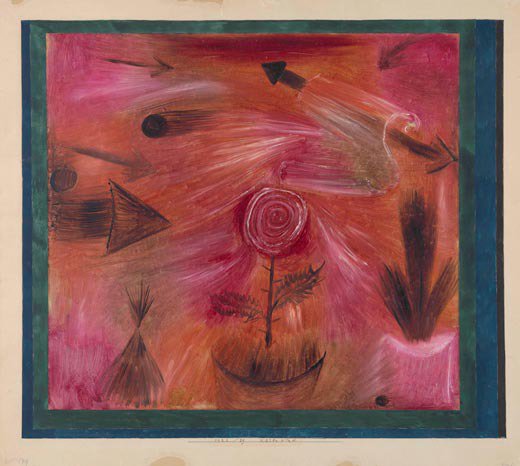Paul Klee
dal 21/3/2013 al 29/6/2013
Segnalato da
21/3/2013
Paul Klee
Fundacion Juan March, Madrid
Master of the Bauhaus presents a selection of 137 works comprising paintings, watercolors and drawings executed between 1899 and 1940, alongside nearly a hundred manuscripts chosen from among his lecture notes, which represent each one of the twenty-four chapters into which Klee's texts are divided.

Curated by Fabienne Eggelhöffer and Marianne Keller–Tschirren
The exhibition is the result of several years of work in collaboration with the Zentrum Paul Klee in Bern, and it is based on what may well be —after the publication of the artist's catalogue raisonné— the most significant and relevant research project on Klee of a "structural" nature conducted in the last decades: the critical edition of his pädagogischer Nachlass. Paul Klee: Master of the Bauhaus presents a selection of 137 works comprising paintings, watercolors and drawings executed between 1899 and 1940, alongside nearly a hundred manuscripts chosen from among his lecture notes, which represent each one of the twenty-four chapters into which Klee's texts are divided.
Furthermore it presents objects and documents that range from contemporary photographs to the artist's herbariums, encompassing some of his reading materials, documentary sources for his thinking, his writing, his drawing notebooks, and his publications. It is a multifaceted collection of material that enables one to adequately contextualize his life and work at the Bauhaus in Weimar and Dessau and helps clarify the mutual influences between his theory and his artistic practice throughout his life.
Under the so-called "pedagogical legacy" of Paul Klee exists a collection of texts which is as fascinating as it is heterogeneous: nearly four thousand manuscript pages in which Klee recorded his reflections and theoretical and practical investigations. They are full of striking diagrams, schematic illustrations, tables, color spectrums, constructions and drawings. These notes and illustrations center on the notion of pictorial form, its regular features, governing principles and genesis; on geometry, planes and volumes; on movement; on natural and artificial structures; on configuration in the plastic arts; on rhythm and on color. This Nachlass is, in short, a series of meditations on the life of forms, without which one cannot definitively understand Klee's own theory or his artwork—two areas that (as is obvious in the case of an artist) echo each other mutually.
Nevertheless, and despite the evident significance of these writings, scarcely two exhibitions have ever turned to them explicitly in order establish a visual dialogue that would focus on the relationships between Klee's work and his teaching. This is surely due, at least in part, to the fact that this extraordinarily abundant source of material, as richly evocative as it is challenging to understand, was in a state that proved impractical for its systematic interpretation and analysis.
The Fundación Juan March, which in 1981 organized the second exhibition devoted to Paul Klee in Spain, conceived of this second exhibition in parallel with the study, transcription and critical edition of that immense legacy, a task that was carried out by Fabienne Eggelhöffer and Marianne Keller–Tschirren, exhibition's guest curators.
Opening: 22 March 2013
Fundacion Juan March
Castello' 77, Madrid
Hours: Monday to Saturday:
11.00 – 20.00 h
Sunday and holidays:
10.00 – 14.00 h
Free Admission



